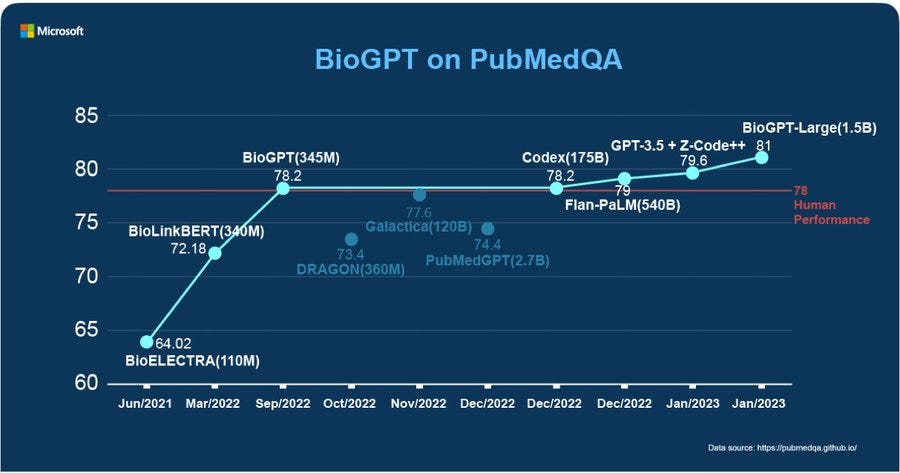I used to intern at a research lab where we would have journal club every alternating Thursdays. The 10-12 scientists from the lab would get together on a Zoom call (during peak pandemic) to discuss an article which the presenter assigned to them for reading that week. The point of it was to stay informed on current literature in the space and brainstorm future experiments which would be most helpful to the progression of research in the field.
Effective way to stay informed on the current events of the field, right? Skim through long, complicated articles on top of all the literature review scientists already have to do. Then wait two weeks to discuss interesting findings so that everyone can find time to read between their tedious lab work.

Example of a single page from a 16-page neuroscience paper
This literature is often too complicated and dense for anyone but the scientists actively researching in the field to understand. As someone non-experienced in the field, it used to take me hours to breakdown the complicated proteins and gene pathways involved in a single paper for journal club. However, even for the experienced researchers, reviewing this kind of literature isn’t the most effective and motivating way to go about learning. Basically, scientific literature is not only inaccessible due to pay walls but also because of the complicated and unapproachable nature of the literature itself.
I’m not implying that the way the literature is written should change, but rather it’s important for tools to simplify the process of reading literature. Scientists should be able to read a paper like the one of above but shouldn’t have to spend all their time reading every paper.
Microsoft’s BioGPT Announcement
Various researchers in AI are working to train models which could eventually enable efficiency in sifting through literature, selecting accurate experiments to run, and much more.
Microsoft announced BioGPT, a large language model (LLM) which achieved 81% accuracy (highest so far) on the PubMed Q&A - an evaluation of various biomedical AI models.


Microsoft Research @MSFTResearch

BioGPT is designed specifically for biomedical text generation and text mining which means the AI can take large amounts of data and essentially “pick and choose” important information and relationships between different pieces of information.
Three specific tasks which researchers focused on for training BioGPT are:
Relation Extraction - understanding the relationships between various parts of research/terms in the text
Question Answering - answering different biomedical related questions given context
Document Classification - classify a document into specific predetermined categories
So, how do all of these functions accelerate scientific research and make the lives of researchers much easier?
AI in Scientific Research
BioGPT is just one of many biomedical or science related AI technologies, and there are many more to come and much more development to happen for tech like BioGPT.
Although AI in science is limited right now, the future potential is huge. The abilities of AI described above can enable faster identification of “which experiments need to be run next” or “what may be the side effect of this drug on this gene” and much more.
Faster and more accurate comprehension of biomedical literature can enable applications like:
More efficient drug and therapeutic discovery - AI may suggest potential drug targets or possible side effects of various lab experiments. Scientists could compare and contrast with their own hypotheses and ideas with those of the AI.
Breaking into a research space and connecting different disciplines - AI can allow researchers to get a literature review on research outside of their own concentration, thus enabling greater multi-disciplinary thinking and collaboration.
Alternate clinical opinions - AI may be able to give an answer to a biomedical related question which health professionals may be able to use as a second opinion or as evidence for their own decisions based directly on the literature (Slightly off topic in terms of AI application in research, but still very cool).
Here are some examples of researchers already exploring AI for different scientific purposes:
Review paper on various AI algorithms that analyze retinal images and detect diabetic retinopathy
DeepMind creates AlphaFold which uses AI to predict protein structures with high accuracy
This is all just the beginning of a long, but very promising, journey of understanding the overlap of AI and science and dealing with obstacles such as ethical considerations, bias, and data privacy.
Time is More than Money in Science
Enabling the most scientifically driven minds to collaborate and getting multiple perspectives can immensely speed up currently tedious and lengthy research processes. The faster all of these tasks can happen, the greater the ability to implement new therapeutics and technology into medical practice. That’s why, time isn’t just money, but it’s literally the matter of life and death, when it comes to science and medicine.
The goal isn’t to have biomedical AI “take over” the jobs of researchers or medical professionals. However, science is known to be a relatively slow-moving field, so all of the time researchers can save by doing literature reviews faster or communicate with the right people better can make a huge difference in research timelines.
Researchers totally seem to understand the importance of collaboration and sharing ideas, thus the prevalence of things like science conferences and journal clubs! Equipped with the right tools, efficiency and accuracy of the decisions being made in the lab could be much higher.
Modern journal club will be those same Zoom calls and lab conversations but with the power of AI involved. The impact is bound to be evolutionary. The crossover between AI and science has only just begun.
Thanks for reading Wide Ruled Notebook! Subscribe for free to receive new posts and support my work.